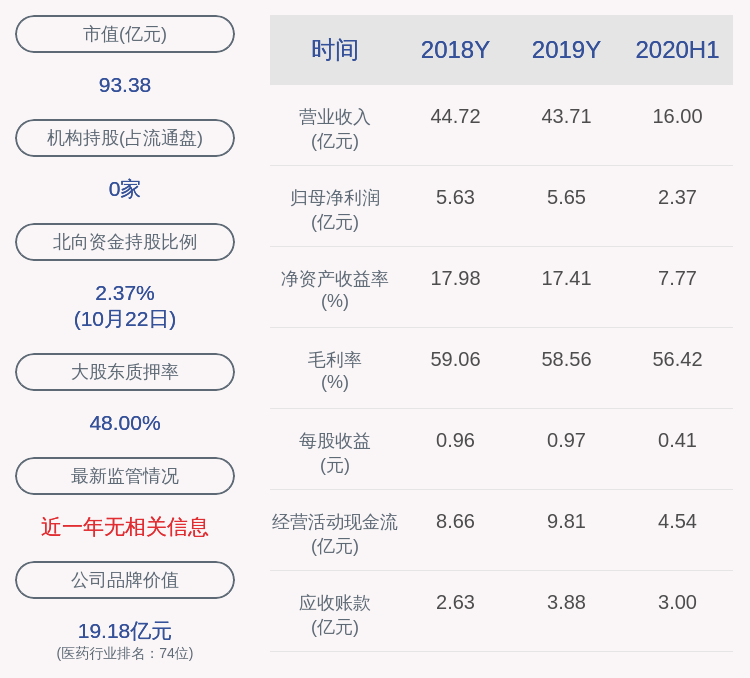- е“ҲеёҢеҖјеә”иҜҘжҜ”иҫғйҡҸжңә (иҙЁйҮҸ)
- е“ҲеёҢйҖҹеәҰжҜ”иҫғеҝ« (йҖҹеәҰ)
- е°ҪйҮҸдёҚдә§з”ҹйўқеӨ–зҡ„еҶ…еӯҳеҲҶй…Қ пјҢ йҒҝе…ҚеҜ№еһғеңҫеӣһ收дә§з”ҹеҺӢеҠӣ (иҖ—иҙ№иө„жәҗе°‘)
bigcache жҸҗдҫӣдәҶдёҖдёӘй»ҳи®Өзҡ„ Hash зҡ„е®һзҺ° пјҢ йҮҮз”Ё fnv64a з®—жі• гҖӮиҝҷдёӘз®—жі•зҡ„еҘҪеӨ„жҳҜйҮҮз”ЁдҪҚиҝҗз®—зҡ„ж–№ејҸеңЁж ҲдёҠиҝӣиЎҢиҝҗз®— пјҢ йҒҝе…ҚеңЁе ҶдёҠеҲҶй…Қ гҖӮ
type fnv64a struct{}const ( // offset64 FNVa offset basis. See https://en.wikipedia.org/wiki/Fowler–Noll–Vo_hash_function#FNV-1a_hash offset64 = 14695981039346656037 // prime64 FNVa prime value. See https://en.wikipedia.org/wiki/Fowler–Noll–Vo_hash_function#FNV-1a_hash prime64 = 1099511628211)// Sum64 gets the string and returns its uint64 hash value.func (f fnv64a) Sum64(key string) uint64 { var hash uint64 = offset64 for i := 0; i < len(key); i++ {hash ^= uint64(key[i])hash *= prime64 } return hash}еҝҪз•ҘеҶ…еӯҳејҖй”ҖеҜ№дәҺ Go иҜӯиЁҖдёӯзҡ„ map, еһғеңҫеӣһ收еҷЁеңЁ mark е’Ң scan йҳ¶ж®өжЈҖжҹҘ map дёӯзҡ„жҜҸдёҖдёӘе…ғзҙ , еҰӮжһңзј“еӯҳдёӯеҢ…еҗ«ж•°зҷҫдёҮзҡ„зј“еӯҳеҜ№иұЎ пјҢ еһғеңҫеӣһ收еҷЁеҜ№иҝҷдәӣеҜ№иұЎзҡ„ж— ж„Ҹд№үзҡ„жЈҖжҹҘеҜјиҮҙдёҚеҝ…иҰҒзҡ„ж—¶й—ҙејҖй”Җ гҖӮ
bigcache зҡ„дҪңиҖ…еҒҡдәҶжөӢиҜ• гҖӮ他们жөӢиҜ•дәҶз®ҖеҚ•зҡ„ HTTP/JSON еәҸеҲ—еҢ–(дёҚдјҡи®ҝй—® cache) гҖӮеңЁ cache дёәз©әзҡ„ж—¶еҖҷ 1 дёҮзҡ„ QPS зҡ„иҖ—ж—¶еӨ§зәҰ 10 жҜ«з§’ гҖӮеҪ“ cache еЎ«ж»Ўзҡ„ж—¶еҖҷ пјҢ 99% зҡ„иҜ·жұӮйғҪдјҡи¶…иҝҮ 1 з§’ гҖӮзӣ‘жҺ§жҳҫзӨәе ҶдёӯеҢ…еҗ« 4 еҚғдёҮзҡ„еҜ№иұЎ пјҢ GC иҝҮзЁӢдёӯзҡ„ mark е’Ң scan д№ҹйңҖиҰҒ 4 з§’ гҖӮ
жҲ‘们еҸҜд»ҘеҫҲе®№жҳ“жөӢиҜ•иҝҷз§ҚзҠ¶еҶө пјҢ жҜ”еҰӮдёӢйқўзҡ„д»Јз Ғпјҡ
package mainimport "time"type Item struct { A string B string C string D string E string F string G G}type G struct { H int I int K int L int M int N int}func main() { m := make(map[int]*Item, 10*1024*1024) for i := 0; i < 1024*1024; i++ {m[i] = &Item{} } for i := 0; ; i++ {delete(m, i)m[1024*1024+i] = &Item{}time.Sleep(10 * time.Millisecond) }}еҸӘжңүдёҖдёӘ map еҜ№иұЎ пјҢ йҮҢйқўеҢ…еҗ«дёҖзҷҫдёҮзҡ„е…ғзҙ пјҢ жҜҸ 10 жҜ«з§’еҲ дёҖдёӘж”ҫдёҖдёӘ гҖӮ
并еҸ‘йҮҸзӣёеҪ“е°Ҹ пјҢ 并且еҚ•дёӘзҡ„ goroutine д№ҹжІЎжңүз«һдәү пјҢ дҪҶжҳҜз”ұдәҺе…ғзҙ зҡ„ж•°йҮҸе·ЁеӨ§ пјҢ еһғеңҫеӣһ收еңЁmark/scanйҳ¶ж®өйңҖиҰҒиҠұиҙ№дёҠзҷҫжҜ«з§’иҝӣиЎҢж Үи®°е’ҢйҒҚеҺҶ гҖӮ

ж–Үз« жҸ’еӣҫ
йӮЈд№ҲеҰӮдҪ•и§ЈеҶіиҝҷдёӘй—®йўҳе‘ўпјҹ
жҲ‘们зҹҘйҒ“еһғеңҫеӣһ收еҷЁжЈҖжҹҘзҡ„жҳҜе ҶдёҠзҡ„иө„жәҗ пјҢ еҰӮжһңдёҚжҠҠеҜ№иұЎж”ҫеңЁе ҶдёҠ пјҢ дёҚе°ұи§ЈеҶіиҝҷдёӘй—®йўҳдәҶеҗ—пјҹиҝҳзңҹжңүиҝҷж ·зҡ„йЎ№зӣ®offheap[11] пјҢ е®ғжҸҗдҫӣдәҶе®ҡеҲ¶зҡ„Malloc() е’Ң Free() пјҢ дҪҶжҳҜдҪ зҡ„зј“еӯҳйңҖиҰҒеҹәдәҺиҝҷдәӣж–№жі•е®ҡеҲ¶ гҖӮеҪ“然дёҖдәӣеҹәдәҺеһғеңҫеӣһ收зҡ„зј–зЁӢиҜӯиЁҖдёәдәҶеҮҸе°‘еһғеңҫеӣһ收зҡ„ж—¶й—ҙ пјҢ йғҪдјҡжҸҗдҫӣзӣёеә”зҡ„еә“ пјҢ жҜ”еҰӮJava: ChronicleMap, Part 1: Go Off-Heap[12] гҖӮе ҶеӨ–еҶ…еӯҳеҫҲе®№жҳ“дә§з”ҹеҶ…еӯҳжі„жјҸ гҖӮ
第дәҢз§Қж–№ејҸжҳҜдҪҝз”Ё freecache[13] гҖӮfreecache йҖҡиҝҮеҮҸе°‘жҢҮй’Ҳзҡ„ж•°йҮҸд»Ҙйӣ¶ GC ејҖй”Җе®һзҺ° map гҖӮе®ғе°Ҷй”®е’ҢеҖјдҝқеӯҳеңЁringbufferдёӯ пјҢ 并дҪҝз”Ёзҙўеј•жҹҘжүҫеҜ№иұЎ гҖӮ
第дёүз§ҚдјҳеҢ–ж–№жі•жҳҜе’Ң Go 1.5 дёӯдёҖдёӘдҝ®еӨҚжңүе…і(#9477[14]), иҝҷдёӘ issue иҝҳжҸҸиҝ°дәҶеҢ…еҗ«еӨ§йҮҸеҜ№иұЎзҡ„ map зҡ„еһғеңҫеӣһ收时зҡ„иҖ—ж—¶й—®йўҳ пјҢ Go зҡ„ејҖеҸ‘иҖ…дјҳеҢ–дәҶеһғеңҫеӣһ收时еҜ№дәҺ map зҡ„еӨ„зҗҶ пјҢ еҰӮжһң map еҜ№иұЎдёӯзҡ„ key е’Ң value дёҚеҢ…еҗ«жҢҮй’Ҳ пјҢ йӮЈд№Ҳеһғеңҫеӣһ收еҷЁе°ұдјҡеҜ№е®ғ们иҝӣиЎҢдјҳеҢ–пјҡ
runtime: do not scan maps when k/v do not contain pointersжүҖд»ҘеҰӮжһңжҲ‘们зҡ„еҜ№иұЎдёҚеҢ…еҗ«жҢҮй’Ҳ пјҢ иҷҪ然д№ҹжҳҜеҲҶй…ҚеңЁе ҶдёҠ пјҢ дҪҶжҳҜеһғеңҫеӣһ收еҸҜд»Ҙж— и§Ҷе®ғ们 гҖӮ
Currently we scan maps even if k/v does not contain pointers. This is required because overflow buckets are hanging off the main table. This change introduces a separate array that contains pointers to all overflow buckets and keeps them alive. Buckets themselves are marked as containing no pointers and are not scanned by GC (if k/v does not contain pointers).
This brings maps in line with slices and chans -- GC does not scan their contents if elements do not contain pointers.
Currently scanning of a map[int]int with 2e8 entries (~8GB heap) takes ~8 seconds. With this change scanning takes negligible time.
https://go-review.googlesource.com/c/go/+/3288
еҰӮжһңжҲ‘们жҠҠ map е®ҡд№үжҲҗ map[int]int пјҢ е°ұдјҡеҸ‘зҺ° gc зҡ„иҖ—ж—¶е°ұдјҡйҷҚдёӢжқҘдәҶ гҖӮ

ж–Үз« жҸ’еӣҫ
йҒ—жҶҫзҡ„жҳҜ пјҢ жҲ‘们没еҠһжі•иҰҒжұӮз”ЁжҲ·зҡ„зј“еӯҳеҜ№иұЎеҸӘиғҪеҢ…еҗ«intгҖҒboolиҝҷж ·зҡ„еҹәжң¬ж•°жҚ®зұ»еһӢ гҖӮ
и§ЈеҶіеҠһжі•е°ұжҳҜдҪҝз”Ёе“ҲеёҢеҖјдҪңдёәmap[int]intзҡ„ key гҖӮжҠҠзј“еӯҳеҜ№иұЎеәҸеҲ—еҢ–еҗҺж”ҫеҲ°дёҖдёӘйў„е…ҲеҲҶй…Қзҡ„еӨ§зҡ„еӯ—иҠӮж•°з»„дёӯ пјҢ 然еҗҺе°Ҷе®ғеңЁж•°з»„дёӯзҡ„ offset дҪңдёәmap[int]intзҡ„ value гҖӮ
жҺЁиҚҗйҳ…иҜ»
- жүӢжҠҠжүӢж•ҷдҪ еҲҶжһҗе…·дҪ“й“ҫжҺҘзҡ„и°·жӯҢжӣқе…үйҮҸе’ҢзӮ№еҮ»зҺҮ
- е…»йўңзҫҺе®№ еҮ ж¬ҫ科еӯҰйҘ®иҢ¶ж–№жҺЁиҚҗ
- иҒҢеңәйңёеҮҢ|зҪ‘з»ңиҜҪи°ӨгҖҒиҒҢеңәйңёеҮҢвҖҰвҖҰжңҖй«ҳжі•йҷўжі•е®ҳдёәдҪ зӯ”з–‘
- иһғиҹ№иҰҒжҖҺж ·и’ёеә”иҜҘжҖҺж ·ж”ҫеңЁй”…йҮҢ иһғиҹ№ж”ҫзӣҳеӯҗйҮҢи’ёиҝҳжҳҜзӣҙжҺҘж”ҫзҜҰеӯҗдёҠи’ё
- жҖҺд№ҲеҜ№д»ҳзһ§дёҚиө·йӮЈдәӣдәІжҲҡзҡ„дәә жҖҺд№ҲеҜ№д»ҳж¬әиҙҹдҪ зҡ„дәІжҲҡй•ҝиҫҲ
- зҫҺз”І|зҫҺз”Іе·Ҙе…·е’Ңеҗ„з§Қеҝ…з”Ёе“Ғ
- дҪ е–Ӯе‘ҳе·ҘеҗғиҚүпјҢеҚҙжҢҮжңӣ他们жңүзӢјжҖ§пјҹ
- жғіиҰҒеҠ и–ӘеҚҙеј дёҚејҖеҳҙпјҹеӯҰдјҡвҖңзҰҸж јиЎҢдёәжЁЎеһӢвҖқпјҢеҠ и–ӘзңҹжІЎйӮЈд№Ҳйҡҫ
- д№°иҠқеЈ«ж—¶пјҢйҖүвҖңеҶҚеҲ¶е№Ій…ӘвҖқиҝҳжҳҜвҖңеҘ¶й…ӘвҖқпјҹжңүе•ҘеҢәеҲ«пјҹеӯҰдјҡеҲ«жҢ‘й”ҷдәҶ
- жё©жҹ”зҡ„з©ҝжҗӯд№ҹеӨӘжӢӣдәәе–ңж¬ўдәҶпјҒеӯҰдјҡиҝҷд№Ҳжҗӯй…ҚпјҢдјҳйӣ…й«ҳзә§

















